Australia fires: Death toll rises as blazes destroy 200 homes
- Published
Firefighters in New South Wales sheltered in their truck as it was overrun by flames
Bushfires have killed at least eight people in south-eastern Australia since Monday, while two others remain unaccounted for.
The latest fires, which raced towards the coast this week, have also destroyed more than 200 homes.
Seven people have been confirmed dead in New South Wales and one in Victoria.
Conditions have eased slightly, and a major road that was closed in Victoria was reopened for two hours, external on Wednesday to allow people to leave.
But many people remain in fire-hit areas. In one town, police dropped off 1.6 tonnes of drinking water by boat.
The seven deaths, external in New South Wales include:
Two people found in separate cars on Wednesday morning
A father and son who stayed behind to defend their home and farm equipment
A 28-year-old volunteer firefighter who was killed when wind flipped his fire engine
Family members of Mick Roberts, a 67-year-old Victorian missing since Monday, confirmed that he had been found dead in his home in Buchan, East Gippsland.
"Very sad day for us to (start) the year but we're a bloody tight family and we will never forget our mate and my beautiful Uncle Mick," his niece Leah Parson said on Facebook.
The deaths bring the total fire-related fatalities across Australia this season to at least 18, with warnings this could rise further.
Of the homes destroyed in this week's blazes, 43 were in East Gippsland, Victoria, while another 176 were in New South Wales.
Earlier on Wednesday, the New South Wales Rural Fire Service said 916 homes had been destroyed this season, external, with another 363 damaged, and 8,159 saved.
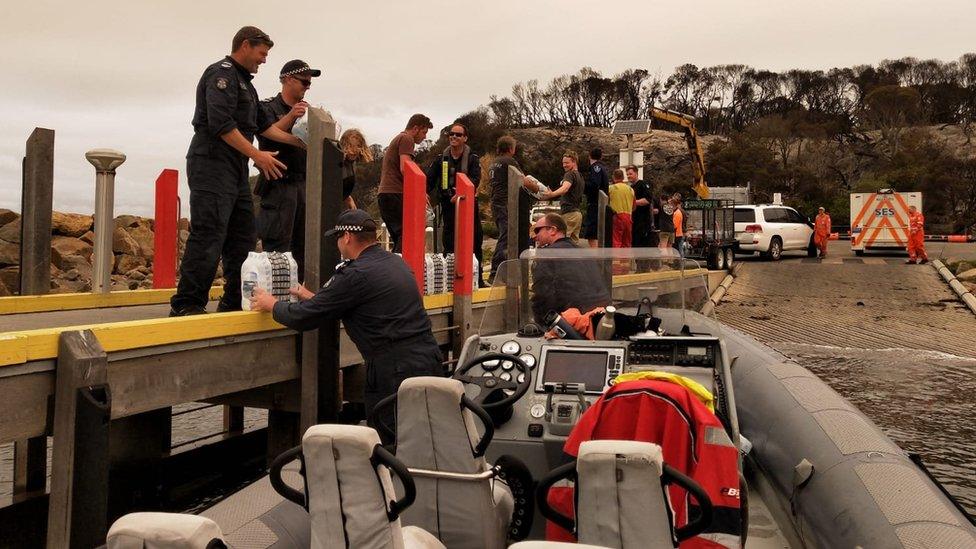
Police brought water, food and medical supplies into Mallacoota by boat
In Mallacoota, Victoria - where thousands fled to the beach on Tuesday - police boats arrived with 1.6 tonnes of water for residents.
They also brought food, a paramedic and medical supplies.
At the same time, police warned people in Sunbury, Victoria, external - about 40km (25 miles) north-west of Melbourne - to leave the area, as an emergency fire warning was in place.
The smoke from Wednesday's fires was visible more than 2,000km (1,200 miles) away from the South Island of New Zealand, where the haze tinted the sky orange.
Earlier, New South Wales Premier Gladys Berejiklian said workers would take advantage of the milder weather on Wednesday to clear roads and restore power.
But she said temperatures were expected to rise again on Saturday.
"At the very least, weather conditions will be at least as bad as what they were yesterday," she said.
The New South Wales fire service has warned of dangerous conditions for tourists on the south coast of NSW over the weekend, telling them to leave before Saturday.
Allow X content?
This article contains content provided by X. We ask for your permission before anything is loaded, as they may be using cookies and other technologies. You may want to read X’s cookie policy, external and privacy policy, external before accepting. To view this content choose ‘accept and continue’.

Temperatures are expected to reach the 40Cs in the south-east into the weekend, exacerbating already dangerous conditions in fire-ravaged Victoria and New South Wales.
Meteorologists say a climate system in the Indian Ocean, known as the dipole, is the main driver behind the extreme heat in Australia.
BBC Weather's Helen Willetts explains what's driving Australia's intense heat
The fire service warned they had been unable to reach some people in remote areas of NSW.
"We've got reports of injuries and burn injuries to members of the public," said New South Wales rural fire commissioner Shane Fitzsimmons.
"We haven't been able to get access via roads or via aircraft - it's been socked in [runways have been closed] or too dangerous."
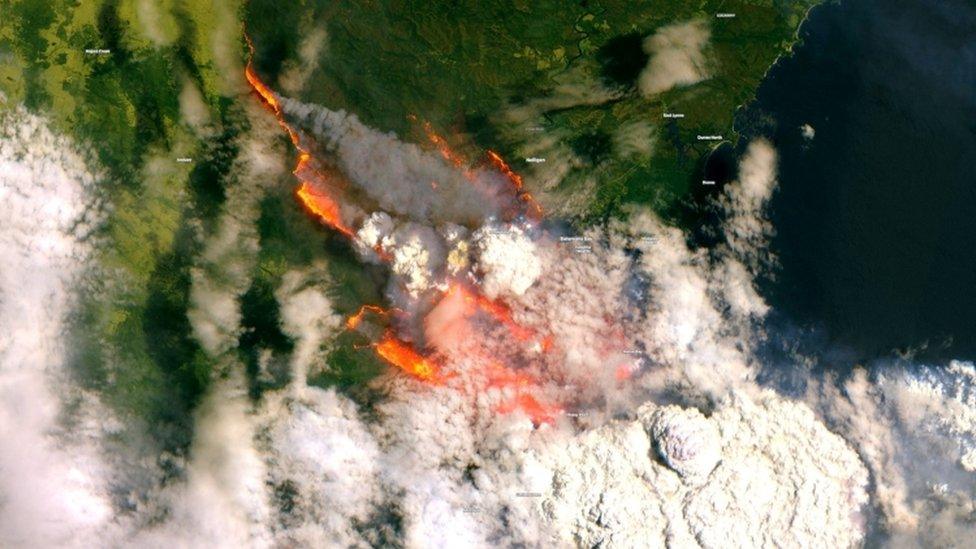
A satellite image shows the extent of smoke and flames at Batemans Bay, NSW
In Mallacoota, many people spent the night sleeping in their cars or on deckchairs.
Victoria Emergency Commissioner Andrew Crisp said - as well as the police vessels - "a large barge" was sailing from Melbourne to the town with food, water and 30,000 litres of fuel.
In Cann River, a town about 80km (50 miles) inland from Mallacoota, residents warned that food supplies were running low, external.
Further north in Ulladulla, New South Wales, people were queuing outside supermarkets - while cuts to mobile networks and landlines meant people also waited to use payphones.
The military said amphibious ships were setting off from Sydney and would arrive in fire-hit coastal areas, external of New South Wales and Victoria by Friday.
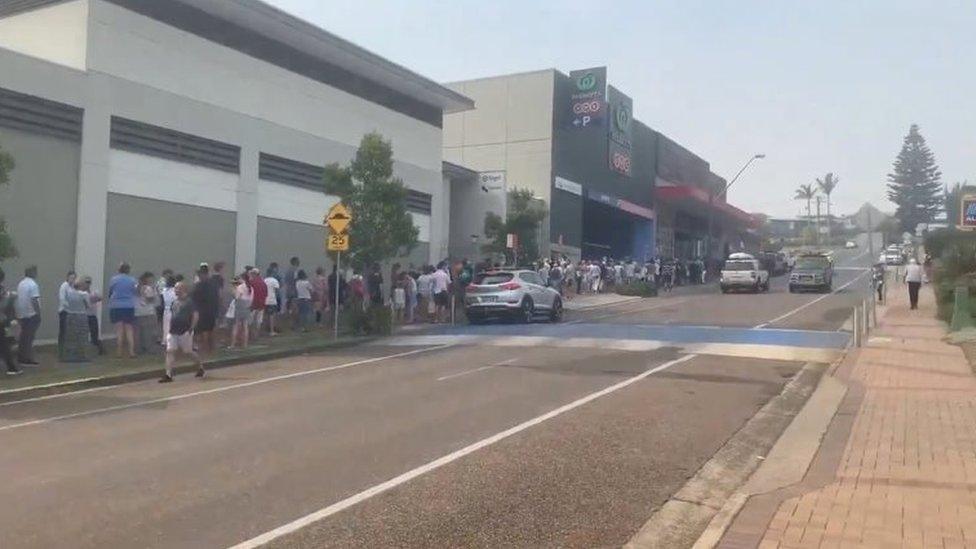
A long queue formed at a Woolworths supermarket in Ulladulla, New South Wales
Meanwhile, a woman from Mallacoota who took a photo that went viral has spoken about the image.
Allison Marion took the picture of her 11-year-old son, Finn, moving their family to safety in a powerboat.
"Finn drove the boat and my other son looked after the dog in the boat and [I am] very proud of both of them," she told ABC News, external.
When the family returned to land, as conditions eased, they went to check on their home.
"Our street somehow escaped the fire somehow," she said. "However, I feel for many people in our community who have lost their homes. It's just truly saddening."
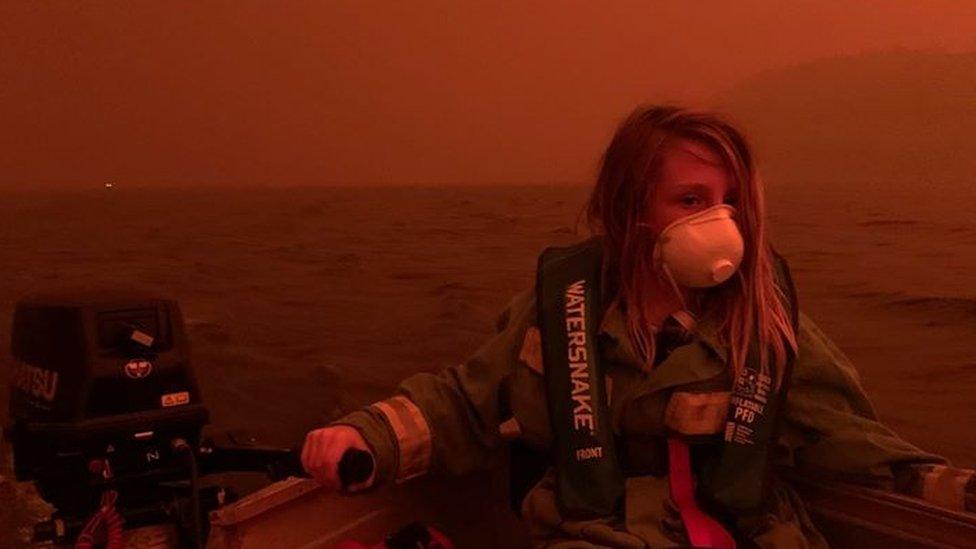
The picture of 11-year-old Finn piloting a powerboat went viral
- Attribution
- Published1 January 2020
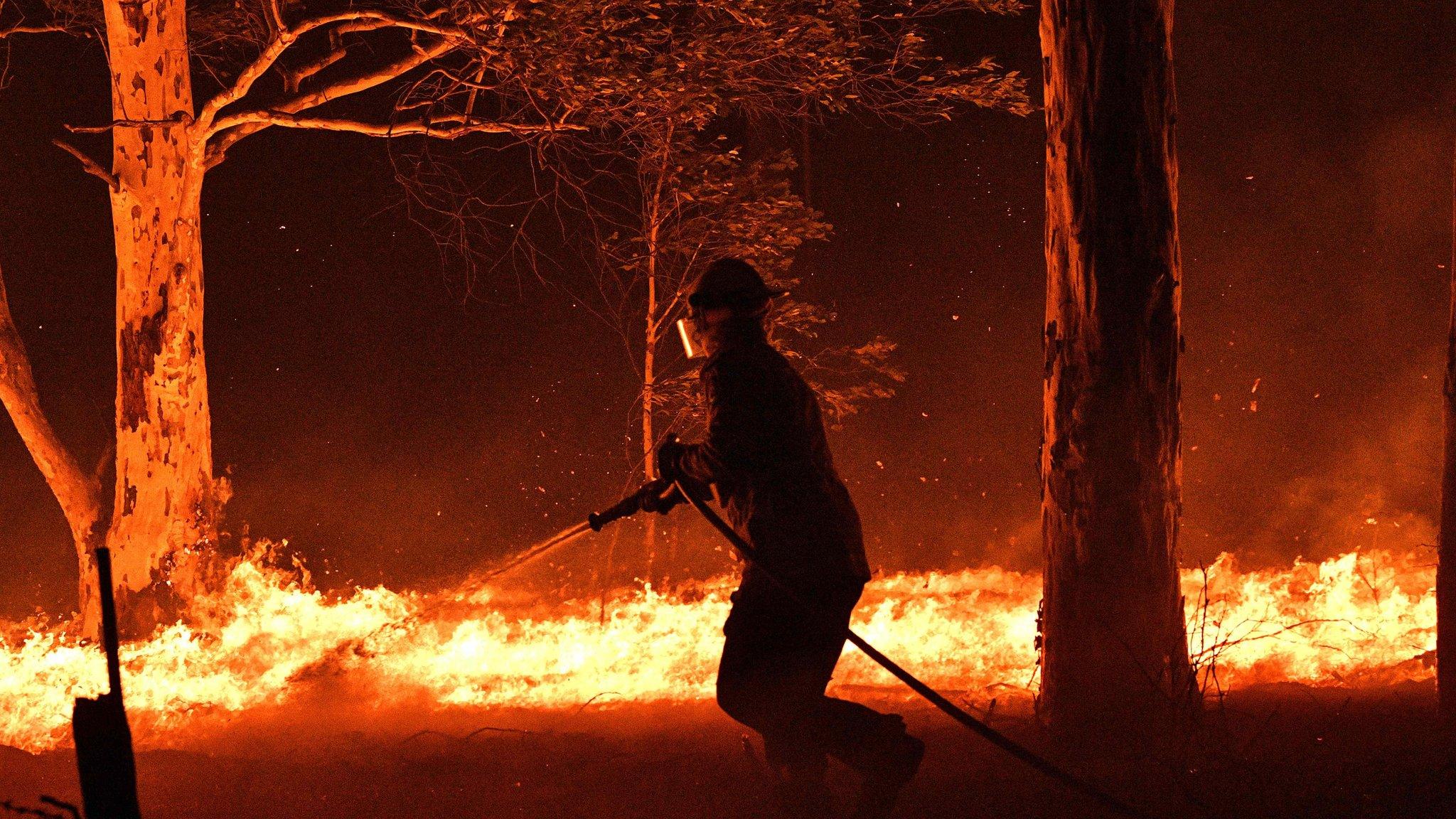
- Published31 December 2019
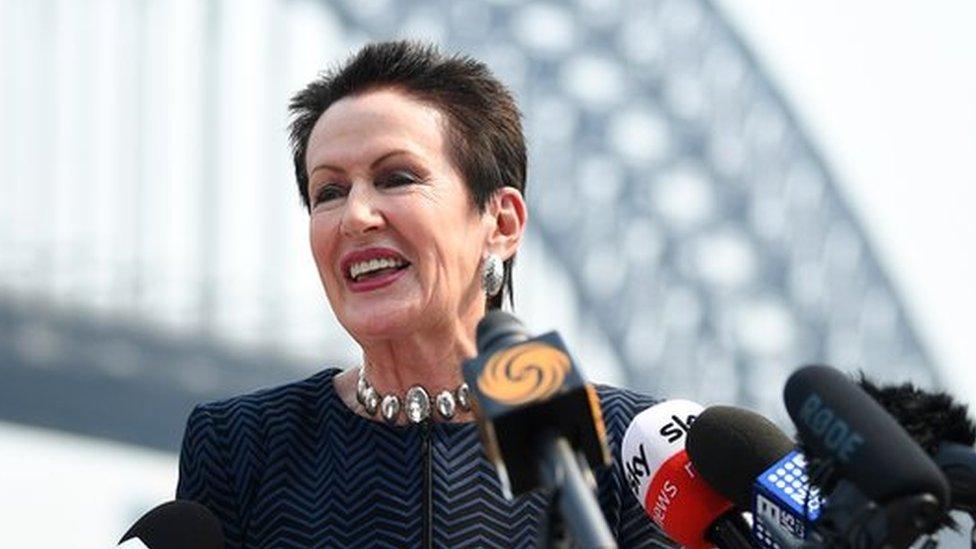
- Published31 December 2019
